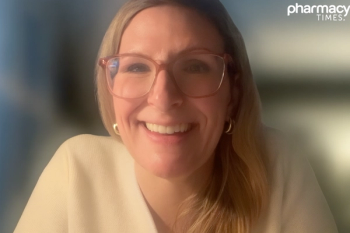
Child Pain Treatment Decisions Seem to Depend on Race
Black children with severe pain are less likely to receive opioids in emergency rooms than white children.
Black children with severe pain are less likely to receive opioids in emergency rooms than white children.
A new study from George Washington University uncovered racial differences while evaluating opioid administration and pain in children hospitalized with appendicitis.
Study author Monika Goyal, MD, MSCE, told Pharmacy Times that pharmacists and all health care professionals should be conscious of possible
“There has been literature documenting racial disparities in the pain management of adults. Our goal was to determine whether these racial disparities also existed in the care of children,” Dr. Goyal said. “We specifically chose appendicitis because it is a condition that is well regarded as a painful surgical condition and management of pain—specifically with opioids—is one of the mainstays of treatment.”
Dr. Goyal and her fellow researchers took a look at hospitalized patients ages 21 or younger with a diagnosis of appendicitis between 2003 and 2010.
They examined the frequency of opioid and non-opioid analgesia administration and adjusted for patient variables such as demographics, ethnicity, and pain scores.
Of the almost 1 million children diagnosed with appendicitis, 56.8% of them received some type of analgesia, and around 41% received opioids.
Breaking these data down by race, the researchers found that only 12.2% of black children with appendicitis were given opioids, while 33.9% of their white counterparts had received opioids.
Black children with moderate pain or severe pain were less likely to receive any analgesia than white patients with the same pain ratings, the researchers determined.
“We were surprised that these differences also exist in children, and in a condition like appendicitis, where one of the mainstays of management is adequate pain control with opioids,” Dr. Goyal told Pharmacy Times. “We were also surprised by how marked the racial differences in opioid administration were.”
In an accompanying editorial, authors from Harvard Medical School said there is a need to explain these racial disparities in opioid treatment in the emergency department.
“If there is no physiological explanation for differing treatment of the same phenomena, we are left with the notion that subtle biases—implicit and explicit, conscious and unconscious—influence the clinician’s judgment,” they wrote. “It is clear that despite broad recognition that controlling pain is a cornerstone of compassionate care, significant disparities remain in our approach to pain management among different populations. We can and should do better.”
These study findings were published in JAMA Pediatrics.
Newsletter
Stay informed on drug updates, treatment guidelines, and pharmacy practice trends—subscribe to Pharmacy Times for weekly clinical insights.


















































































































































































































